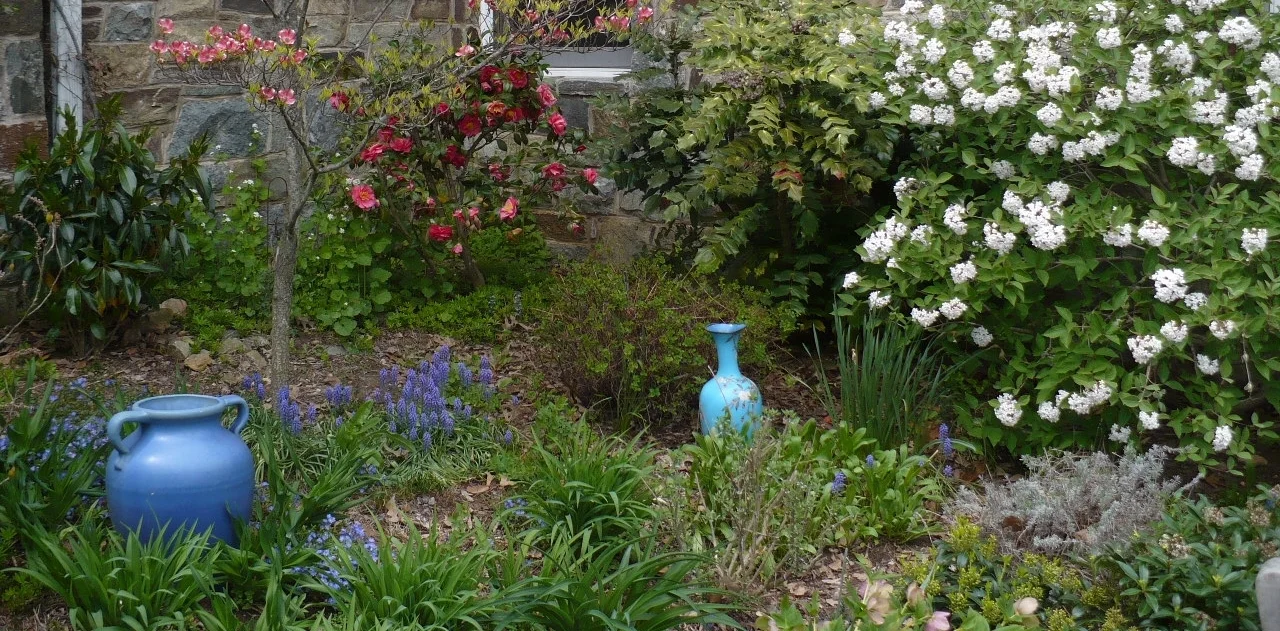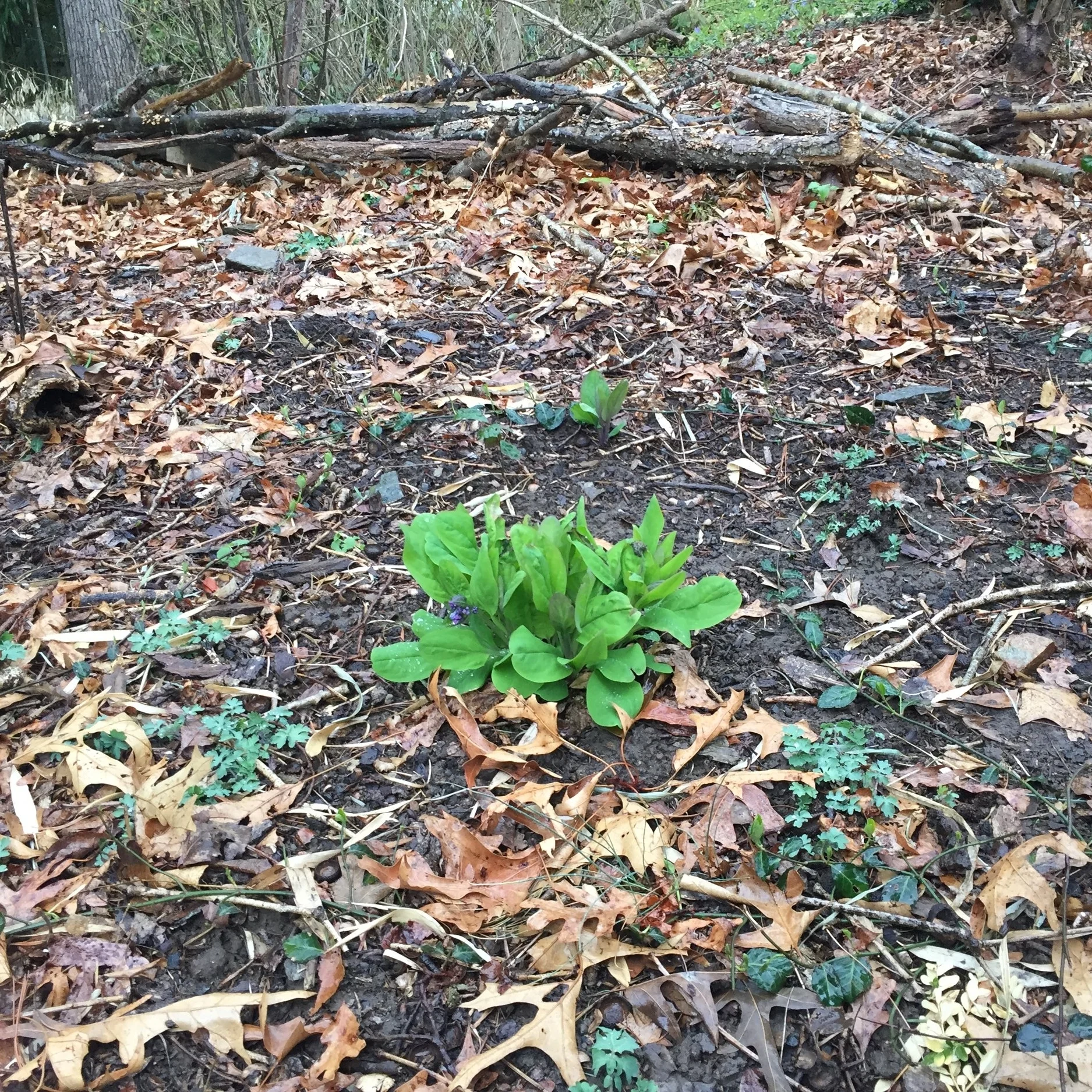By now it should be apparent that I have a 'thing' for deer-resistant natives. Here is yet another smallish, early-blooming tree that fits in any garden and deserves to be planted more - the 2-winged Silverbell - often listed simply (and slightly incorrectly) as Carolina Silverbell (Halesia diptera). This is a nice understory tree for part-sun to full sun. I have it growing at the edge of the woods, where it must fight for sunlight with a Sourwood (more about that in a later post), a white pine, and a holly, so it is rather open and irregular. Blooms are white and bell-shaped, hanging down from the branches, and faintly fragrant. Seed pods are interesting and so is the bark, rather striated and furrowed. Fall color is variable but last year was a nice, clear yellow. After about 15 years, mine is about 20 feet tall.
It's not up there with the Serviceberry or dogwood, but worth thinking about if you have space, especially in an informal or semi-wooded setting. It never fails to draw comments when in bloom.
The yellow shrub below and behind the silverbell is the non-native Kerria japonica. This unusual shrub is upright and vase-shaped, with green stems filled with yellow blossoms in the spring, and thrives in part sun. So easy to grow! I especially appreciate the fact that the stems tend to stay green in winter, thus giving us additional interest in the garden when it's most needed. Avoid the double-blooming form; the single is more graceful.
Not the best photo but hope you see the charm!








